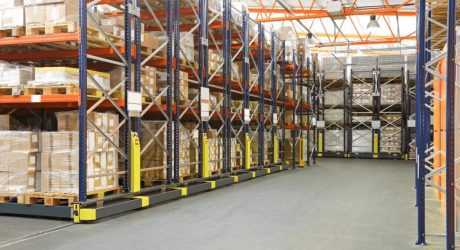The clock is ticking when it comes to climate change. This guide has a total of 5 tips and tricks that will help to make your business eco-friendly moving forward.
Since the start of the new decade, more pressure has been placed on businesses and everyday people to reduce their impacts on the surrounding environment.
Of course, this is no easy task. It’s going to be very difficult – especially for businesses.
The reason why businesses are going to struggle is because of their pre-established supply chains and operations. When the foundations are already in place, it can take a long time to change them.
Checkout Five Important Tips And Tricks To Make Your Business Eco-Friendly:

There’s no need to fret or panic, though. Sure, it can’t be done overnight, but you can make your business eco-friendly.
This will enable you to:
- Save the planet
- Make more money
- Last long into the future (where non-eco-friendly companies will collapse)
The size and scale of your current business don’t matter. You could be a small brand or a fast-growing global organization – any business can go green. Here’s how:
1. Reduce Your Emissions
The first step of your eco-friendly blueprint should be focused on reducing your business emissions.
Before anything else, you should learn about the different types of emissions.
In total, there are three emissions:
- Scope 1
- Scope 2
- Scope 3
Scope 3 emissions (waste disposable, employee business travel, production of purchased materials) are the hardest to control and handle, which is why you need to make them a priority.
Right now, many businesses are tackling their emissions by recycling. Throughout their premises, employees will be encouraged to use all the recycling bins that are spread out across the floors. In addition to this, recycling balers will be used in factories so that any bulk waste materials (such as cardboard and plastic) can be condensed into bales and then passed on to recycling companies. It’s smart and a handy little way to boost profits.
In addition to this, you should think about switching to ‘virtual business meetings. Rather than your sales team driving up and down the country each week, they can speak to potential customers and clients via video apps (such as the highly popular Microsoft Teams).
Not only does this allow you to reduce travel and accommodation costs, but it also helps you to reduce the number of emissions your business produces (after all, long car journeys are not good for the environment).
2. Introduce a Hybrid Work Model
Unless you’ve been living under a rock since 2020, you’ll know that hybrid work models have now become commonplace in the business world. However, in case you don’t yet know what a hybrid work model is, there’s a definition below.
Hybrid work mode: when employees combine working in the physical workplace with working from home. For example, they will work 3 days a week in the office and 2 days a week from home.
By introducing a hybrid work model, you can drastically reduce the impact that your business has on the environment. They’ll be less need for large office space, reduced energy costs, and your employees won’t have to commute to and from work every day. Essentially, it’s a win-win situation.
Make sure to speak closely with your employees so that you can create a hybrid work model that works best for everyone.
For example, Apple has a remote model in place that allows employees to work from home and then go to Apple Park on certain days of the week.
3. Make Your Office Paperless (Paperless Billing)
Is your business office crammed to the ceiling with documents and files? If the answer is yes, then it’s time to change.
Nowadays, eco-friendly companies aim to go entirely paperless. Some companies have already achieved this.
Here are some interesting facts (courtesy of DocFly) that highlight why businesses are going paperless:
- The average office worker uses 10,000 sheets of paper per year
- The average company spends $20 in labor per single paper document
Clearly, not only is there an environmental incentive behind the change, but there’s also a monetary one, too.
A few years ago, Elon Musk (Tesla CEO) even said in an interview with Rolling Stone:
Climate change is the biggest threat that humanity faces this century, except for AI
When the most successful businessman on the planet says something like this, it’s hardly surprising that thousands of other businesses have started to follow suit.
So, in order to go paperless, the concept is relatively simple: ditch the paper.
Rather than using paper, you will instead go entirely digital. For example, rather than employees constantly printing off documents, they will instead be able to access and edit all the documents they need through cloud-based apps (such as Microsoft Office).
Additionally, it’s a good idea to start paperless billing your customers. This is good for you, them, and the environment. Plus, you’ll be able to get messages and important invoices to your customers much more quickly than before.
Additional Resource: 2022 Is The Year Of Corporate Sustainability – An Earth-First Business Culture Guarantees Success
4. Switch to Green Suppliers
Over the coming years, it should be a long-term priority of yours to switch to green suppliers. This way, your supply chain will automatically become more sustainable and eco-friendlier.
It can take a while to seek out the right green suppliers, particularly within the range of your local vicinity. Therefore, patience and research are key in this regard.
5. Prioritize Reusable Packaging
Reusable packaging is going to be the future of business. This is especially true in the age of e-commerce and home deliveries, where customers often have to return their products. With reusable packaging, they can simply tape everything back together and have it back to you within 48 hours via postage.
Conclusion
You’ve now reached the end of the guide. However, because you’ve stuck around, here are three additional tips for you to follow:
- Hold annual, company-wide energy revies
- Use light timers in your offices
- Attend environmental training courses with your teams
Over time, you’ll easily become a sustainable and eco-friendly business.
Read Also:




























